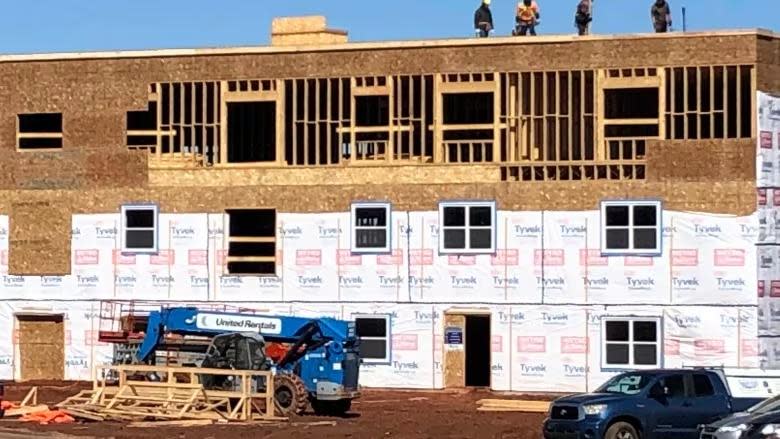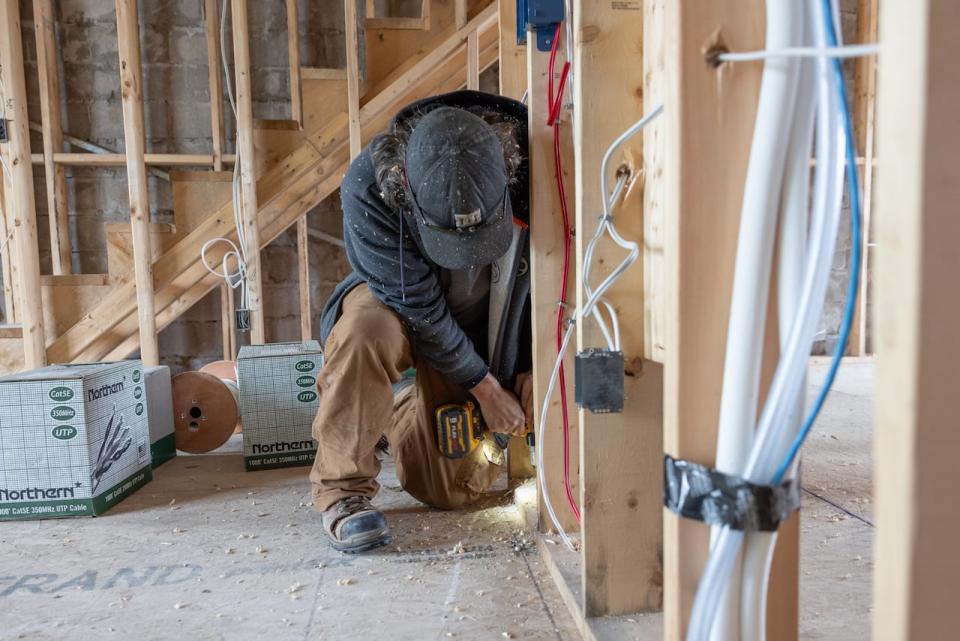Home builders group calls for action on mortgage rules, labour shortage

Canada is on the right track but won't reach its target of building 5.8 million new homes in the coming decade unless it loosens mortgage rules, addresses the labour shortage and helps to boost production of factory-built homes, says the Canadian Home Builders' Association (CHBA).
"Things are moving in the right direction. We have a long way to go. We are nowhere near capable of doubling housing starts at this time," CHBA CEO Kevin Lee said Thursday.
"The fundamental piece right now is to be able to get first-time buyers into the market."
Lee was in Ottawa Thursday delivering the CHBA's Sector Transition Strategy, a report he said offers options to help build enough homes to address the housing crisis.
The CHBA said that higher interest rates and an amortization period restricted to 25 years for uninsured mortgages have priced first-time buyers out of the market.
"In simple terms, you can't build houses if people can't afford to buy them," Lee said.
Right now, buyers who purchase with a deposit of less than 20 per cent are required by the Canada Mortgage and Housing Corporation to purchase mortgage insurance, and their maximum amortization period is restricted to 25 years.
Expanding amortization
To bring down mortgage payments, the CHBA said the federal government should expand amortization periods to 30 years for newly-constructed homes with insured mortgages.
Doing that would encourage "new construction and new units and create more supply without" driving up prices in the existing housing market, the CHBA said Thursday.
To tame a hot housing market, the Harper government reduced amortization periods for insured mortgages from 40 to 35 years in 2008, from 35 to 30 years in 2011 and then again from 30 to 25 years in 2012.
Lee said that with the Liberal government now trying to tame spending, adjusting the mortgage amortization rules specifically for new housing would be a nearly cost-free way to boost construction.
"This is a low-cost measure, pretty much a zero-risk measure, so that's where we need to head," he said.

The Canadian Home Builders Association says 150,000 workers will be needed over the coming decade to replace people retiring. (Robert Short/CBC)
The CHBA also wants the GST rebate on the cost of new or substantially renovated housing to be increased and said the federal government should ensure that taxation, codes and standards do not slow housing construction.
The CHBA said that development fees and lot levies have increased by almost 700 per cent over the past two decades and now can make up as much as 31 per cent of the cost of a new home.
"Red tape is causing delays while additions to building codes continually add to the cost of construction," Lee said, praising the federal government's Housing Accelerator Fund as a good start.
The Housing Accelerator Fund has a budget of $4 billion until 2026-27 and is used to encourage more home building in cities. The fund's objective is to build 100,000 more units across the country by streamlining land-use planning and development approvals.
Labour shortage
The CHBA strategy said 22 per cent of the construction workforce in Canada is set to retire over the coming decade and 150,000 workers are needed to replace them just to maintain current production levels.
To address this shortage, the CHBA wants governments to promote careers in the construction industry and tweak the immigration system to attract more skilled foreign workers to Canada.
"We need changes to the labour system to ensure we have enough workers to meet demand for new construction and renovation," Lee said. "The start of changes to the immigration system are underway. We need much more."
The CHBA said that increasing the size of the construction workforce will not be enough and productivity must improve to fill the gap. That can be done, Lee said, through more factory-built, or prefabricated, home building.
"Factory-built construction comes with many benefits, including faster building with fewer delays and increased output with less labour," Lee said.
The CHBA said that the housing industry is built for a boom and bust cycle, but factory construction requires heavy initial investment to build the factories, and a more stable output to remain viable once operating.
To get those factories built, the industry needs financial support, the CHBA said, including a refundable tax credit for machinery worth 30 per cent of the cost of that machinery.
Dennis Darby, president and CEO of Canadian Manufacturers and Exporters, told CBC News tax credits are a good way to drive investment and reward industries that make investments to improve productivity.
"We need to do everything we can to promote and support modular or prefabricated housing, because it takes less effort and energy to make and it can reduce time," Darby said. "It makes logical sense."
The CHBA also wants the federal government to provide low-cost financing for factory construction that is repayable based on the number of units a given factory produces.


